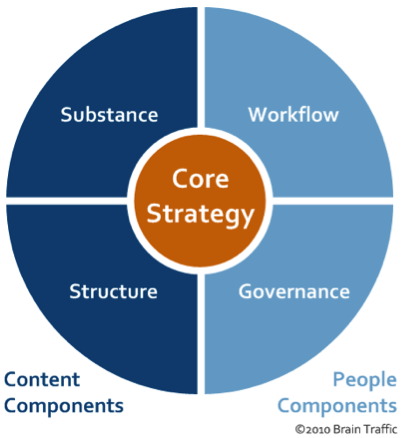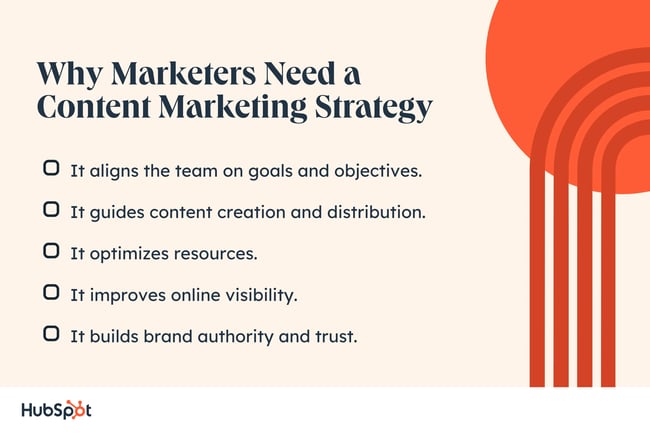Key Benefits to Work with a Content Strategy Agency
Key Benefits to Work with a Content Strategy Agency
Blog Article
Measuring the Success of Your Material Technique: Crucial Metrics to Track
In the world of electronic advertising and marketing, the performance of a content technique is often gauged via various metrics that reflect both reach and impact. While traffic metrics provide a foundational understanding of target market interaction, it is the combination of engagement and conversion metrics that truly discloses the deepness of content resonance and its financial effects. Comprehending which metrics are vital and exactly how to interpret them can significantly boost your critical method. The obstacle exists in understanding which details metrics to prioritize and exactly how they can inform your following steps in optimization.
Website Traffic Metrics
In the realm of material approach, recognizing web traffic metrics is critical for assessing the efficiency of electronic initiatives. These metrics offer understandings into customer actions, helping companies identify the reach and impact of their content. Key traffic metrics consist of web page sights, unique visitors, and session duration, each offering unique point of views on target market involvement.
Web page sights indicate the complete variety of times a webpage has actually been seen, while special site visitors measure the variety of distinctive people accessing the web content, thus getting rid of duplicate matters. Tracking these 2 metrics with each other enables an extensive understanding of content usage patterns. Furthermore, session duration reveals for how long customers are interacting with the material, supplying understandings into its relevance and involvement degree.
Analyzing web traffic resources is also important; it assists determine where visitors are originating from, whether organic search, social media sites, or references. This details is crucial for refining advertising and marketing techniques and optimizing content distribution channels. By concentrating on web traffic metrics, companies can determine the presence of their material, identify patterns, and make informed choices to improve overall web content approach performance. In summary, website traffic metrics function as foundational indications that guide tactical changes and foster constant improvement.
Engagement Metrics
While website traffic metrics offer beneficial insights right into user reach and actions, interaction metrics offer a deeper understanding of just how audiences connect with material once they get here. These metrics are critical for analyzing the quality of individual communications and the overall performance of a web content technique.
Scroll depth determines just how much down the page individuals scroll, supplying understandings into material framework and readability. Social shares suggest the degree of vibration with the target market, highlighting web content that motivates customers to share with their networks.
Furthermore, comments and user-generated content can function as signs of target market passion and participation. High interaction degrees usually associate with raised brand commitment and campaigning for, as individuals that communicate with content are much more likely to support the brand and keep in mind.
Conversion Metrics
Exactly how successfully does your material drive wanted activities from your audience? Conversion metrics are crucial for examining the efficiency of your material technique in persuading users to take specific activities, such as registering for an e-newsletter, purchasing, or downloading a resource. By tracking these metrics, you discover here can figure out the return on investment (ROI) of your web content initiatives and recognize locations for enhancement.
Secret conversion metrics consist of conversion rate, which gauges the portion of visitors that complete a desired activity, and the average order value, which indicates the typical quantity spent by clients. Additionally, tracking list building metrics, such as the number of leads obtained with material, can offer insight right into the efficiency of this content your content in nurturing leads down the sales funnel.
Another important metric is consumer purchase price (CAC), which examines the total cost linked with acquiring a brand-new client via your content initiatives. Content Strategy Agency. By examining these metrics, you can make data-driven choices to optimize your web content strategy, fine-tune your messaging, and boost calls-to-action, ultimately leading to enhanced conversions and organization development
SEO Efficiency

First, organic website traffic acts as a main indicator of SEO success, showing the variety of site visitors getting to your website through internet search engine outcomes. Examining natural web traffic trends with time can reveal the efficiency of your optimization initiatives.
2nd, keyword rankings are crucial as they suggest just how well your material performs for targeted search terms (Content Strategy Agency). Keeping an eye on variations in rankings can help you fine-tune your key words method and focus on content improvements
Third, click-through rate (CTR) is essential, as it measures the portion of customers that click your link after seeing it in search engine result. A high CTR suggests that your titles and meta summaries are appropriate and engaging to customer questions.
Social Network Effect
What duty does social networks play in improving content technique metrics? Social media site functions as an effective amplifier for material distribution, significantly influencing brand, reach, and engagement recognition. By tracking social media sites metrics such as shares, suches as, comments, and overall involvement prices, organizations can gauge the performance of their content strategy and recognize what reverberates with their audience.
Moreover, social media sites systems provide valuable demographic understandings, permitting business to tailor web content to specific audience sections. Keeping track of reference web traffic from social networks to the web site additionally aids in comprehending the conversion possibility of social networks campaigns. The relationship between social media sites communications and web site efficiency can reveal Home Page the efficiency of web content in driving individual actions.

Conclusion
To conclude, measuring the success of a web content strategy necessitates a detailed analysis of numerous metrics. Traffic metrics disclose the reach of web content, while involvement metrics offer understandings into target market interaction. Conversion metrics analyze the monetary effects of material efforts, and search engine optimization efficiency indicates exposure in online search engine. Additionally, reviewing social media sites impact highlights the effectiveness of web content circulation. Collectively, these metrics assist in educated decision-making and optimization of web content approaches to accomplish wanted outcomes.
While traffic metrics supply a fundamental understanding of target market involvement, it is the combination of involvement and conversion metrics that truly reveals the depth of material vibration and its monetary ramifications. By focusing on traffic metrics, organizations can assess the presence of their web content, recognize patterns, and make educated choices to improve general content technique effectiveness. By tracking social media metrics such as shares, likes, comments, and general interaction rates, organizations can gauge the performance of their content approach and recognize what reverberates with their target market.
In summary, leveraging social media impact metrics not just improves the understanding of content performance yet additionally educates future web content production, ensuring placement with target market preferences and making the most of overall approach efficiency.

Report this page